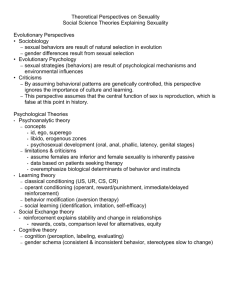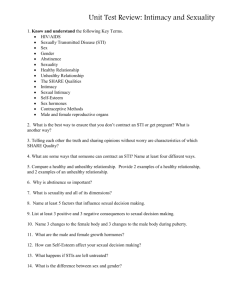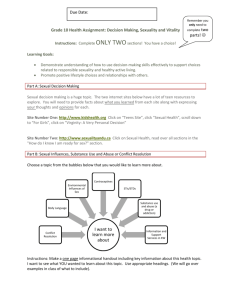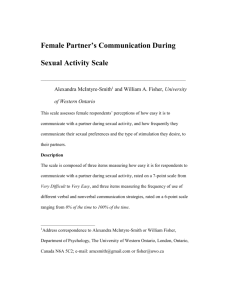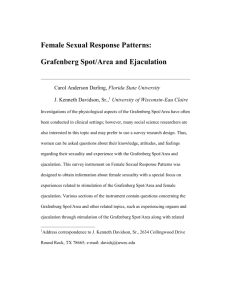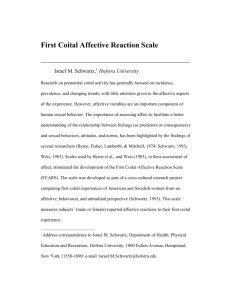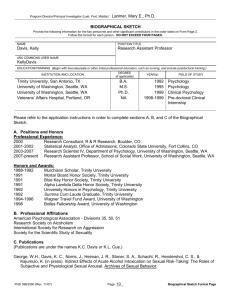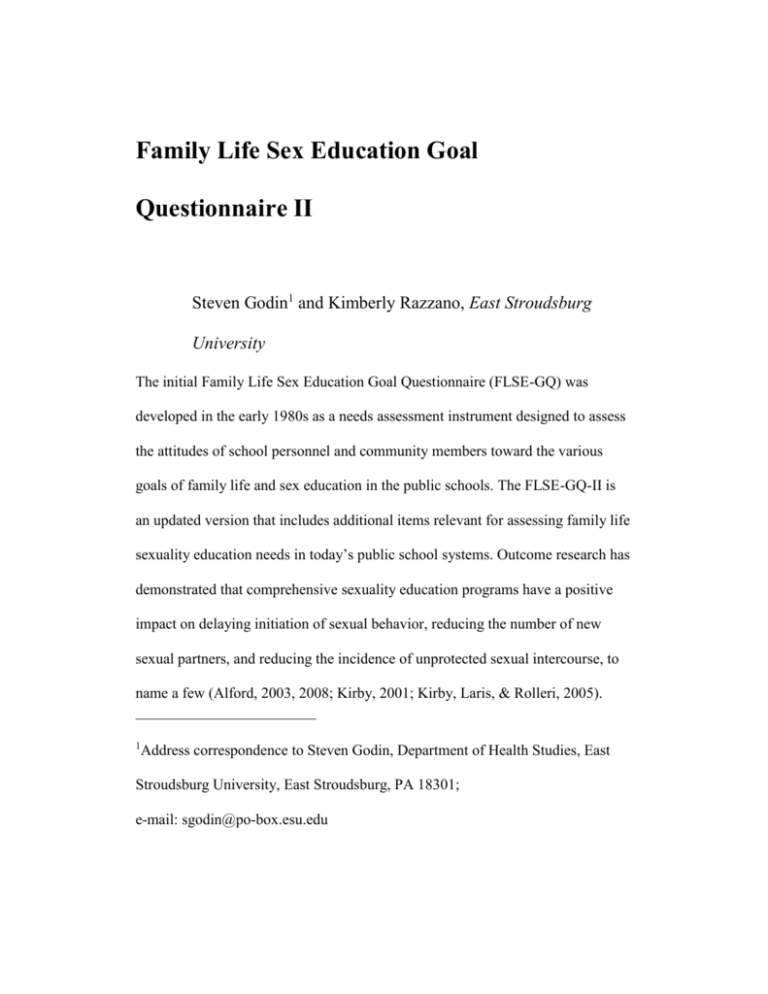
Family Life Sex Education Goal
Questionnaire II
Steven Godin1 and Kimberly Razzano, East Stroudsburg
University
The initial Family Life Sex Education Goal Questionnaire (FLSE-GQ) was
developed in the early 1980s as a needs assessment instrument designed to assess
the attitudes of school personnel and community members toward the various
goals of family life and sex education in the public schools. The FLSE-GQ-II is
an updated version that includes additional items relevant for assessing family life
sexuality education needs in today’s public school systems. Outcome research has
demonstrated that comprehensive sexuality education programs have a positive
impact on delaying initiation of sexual behavior, reducing the number of new
sexual partners, and reducing the incidence of unprotected sexual intercourse, to
name a few (Alford, 2003, 2008; Kirby, 2001; Kirby, Laris, & Rolleri, 2005).
1
Address correspondence to Steven Godin, Department of Health Studies, East
Stroudsburg University, East Stroudsburg, PA 18301;
e-mail: sgodin@po-box.esu.edu
Despite past federal governmental efforts to fund abstinence-based sex education,
the Government Accountability Office Report (2006) and the Waxman Report
(2004) suggest little evidence to date has been documented demonstrating
program efficacy of this approach. Most experts, professional organizations, and
even parents support comprehensive sexuality education (McKeon, 2006). For
decades, school administrators and school boards have hesitated to include more
controversial goals in their sex education programs for fear of negative
community reactions or resistance from teachers or other school personnel;
however, there is evidence that negative attitudes are found mostly among a
small, but vocal minority (Scales, 1983). The FLSE-GQ-II provides an empirical
basis for determining local needs and the extent of school and community support
for the various content areas of sex education and offers a means of clarifying
diverse attitudes and priorities.
Description, Response Mode, and Timing
The instrument has a long and a short form. The long form consists of 60 goal
items, and the short form consists of 20 goal items. Items on both forms have a 5point Likert-type response format with response options labeled from very
unimportant to very important. Respondents circle the number indicating the
relative importance of each goal item for a family life sex education program. The
long form takes 30 to 40 minutes for the parents to complete, and somewhat less
time for the teachers. Due to the length of the long form, the short form may be
more appropriate for some parent groups. Researchers should consider the degree
of literacy, interest, and so forth in the population to be sampled in determining
which version to use.
The FLSE-GQ-II (or its earlier version) has been used with four major
samples: 337 elementary and high school teachers, 248 parents of elementary and
high school children in the Midwest, and 175 high school teachers and 157
parents of high school children in the Northeast. Separate factor analyses were
carried out on the goal items from the teacher and parent samples. These analyses
identified five goal dimensions or themes common to both samples: (a)
facilitating sexual decision making and life skills, (b) teaching about male and
female physical development, (c) encouraging respect for diversity, (d) providing
secondary prevention (e.g., to help pregnant girls to stay in school), and (e)
teaching about the family and integrating sexuality in personal growth. Within the
Midwest sample, Sexual Decision Making and Life Skills was the largest factor
(31% of the variance) with parent participants, whereas Family Life and Personal
Growth were the largest factors (30% of the variance) in the teacher sample.
Within the Northeast sample, Sexual Decision Making and Life Skills was the
sole large factor (32% of the variance). The remaining goal dimensions were
minor goal dimensions in both samples (4% to 9% of the variance). The five
scales of the short form correspond to each of the common goal dimensions and
include items that had loadings of .5 or greater on corresponding factors in both
the parent and teacher samples.
Additional material pertaining to this scale, including information about
format, scoring, reliability, and validity is available in Fisher, Davis, Yarber, and
Davis (2010).
Fisher, T. D., Davis, C. M., Yarber, W. L., & Davis, S. L. (2010). Handbook of
Sexuality-Related Measures. New York: Routledge.






